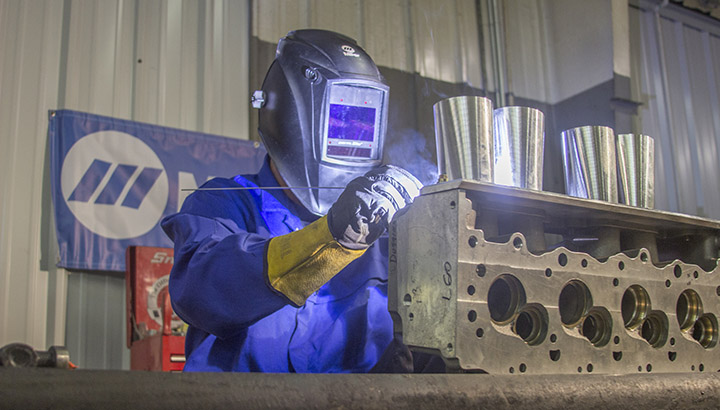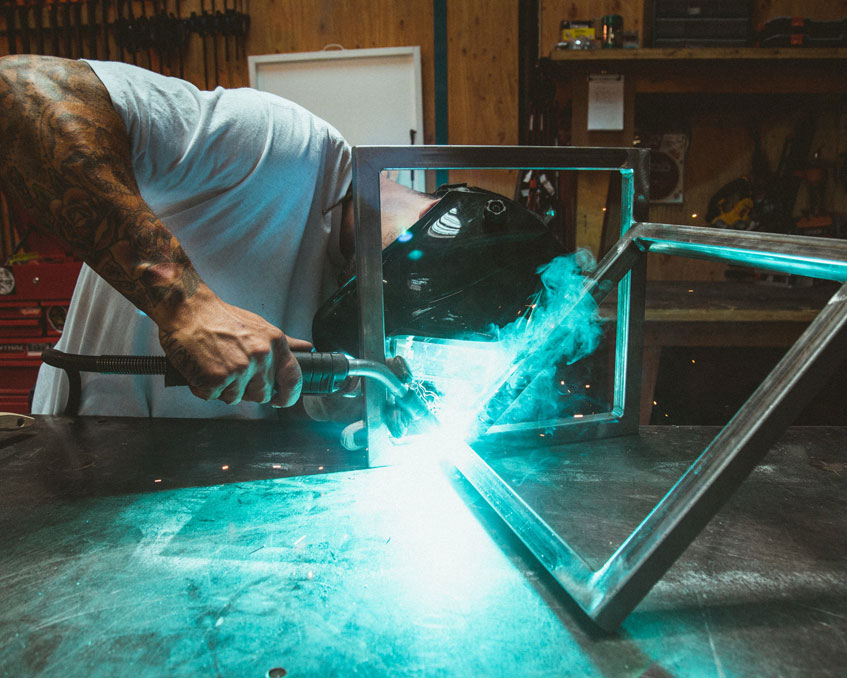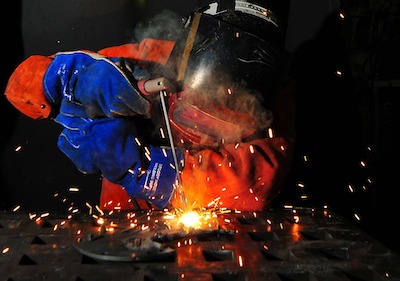Common Welding Fixing Issues and Just How to Address Them Efficiently
Welding fixings usually come across a variety of concerns that can jeopardize the honesty of the end product. Typical issues include inadequate infiltration, porosity, and misalignment, among others. Each problem offers one-of-a-kind challenges that require specific techniques for resolution. Understanding these issues is essential for welders intending to boost their end results and skills. This discussion will check out these common welding fixing problems and effective approaches to address them.
Poor Penetration
Poor infiltration takes place when the weld steel falls short to completely fuse with the base product, resulting in weak joints and potential structural failures. This problem usually comes from not enough warmth input, incorrect electrode angle, or inappropriate welding speed. Welders might experience insufficient penetration because of a mistake of the required specifications for a details product thickness or type. Furthermore, contamination on the base material's surface area can prevent effective bonding, intensifying the issue. To address insufficient penetration, welders need to ensure ideal setups on their equipment and keep a clean work surface area. Regular inspection of welds is recommended to recognize any deficiencies early, permitting for prompt improvements and the prevention of endangered structural honesty in welded settings up.
Porosity
Porosity is a common flaw in bonded joints that materializes as little gas bubbles entraped within the weld steel. This problem can jeopardize the honesty of the weld, bring about minimized stamina and potential failure under tension. Belgrade Welding. Porosity generally arises from contamination, dampness, or inappropriate welding methods, which allow gases to escape right into the liquified weld swimming pool. To address porosity, welders should guarantee proper surface preparation, keep a clean working atmosphere, and use appropriate welding specifications. Furthermore, choosing the appropriate filler product and protecting gas can reduce gas entrapment. Normal inspection and screening of welds can help identify porosity early, ensuring prompt restorative activities are taken, therefore maintaining the high quality and reliability of the bonded structure
Misalignment
Imbalance in welding can arise from different factors, including inappropriate configuration and thermal development. Understanding the source is important for reliable resolution. A number of correction techniques are readily available to straighten elements and guarantee architectural stability.
Sources of Imbalance
Welding misalignment frequently stems from a range of underlying issues that can jeopardize structural integrity. One main cause is improper fit-up of parts prior to welding, which can bring about gaps and unequal surfaces. Variants in thermal development throughout the welding procedure can also result in distortion, especially if the products being signed up with have different coefficients of growth. In addition, insufficient securing and fixturing may fall short to hold elements firmly in location, causing activity during welding. Improperly kept tools, consisting of welding devices and devices, may present variances in the weld grain, further adding to imbalance. Driver mistake, stemming from not enough training or experience, can additionally play a considerable role in producing misaligned welds.

Adjustment Strategies Available
Addressing misalignment efficiently requires a combination of rehabilitative methods customized to the details issues handy. One usual technique is the use of jigs or fixtures to hold components in the appropriate position throughout welding, ensuring constant positioning. In addition, pre-heating the products can help in reducing distortion and improve fit-up. For significant imbalance, mechanical realignment techniques, such as utilizing hydraulic jacks or clamps, can be utilized to deal with the setting prior to welding. Post-weld heat therapy might likewise be necessary to alleviate stress and anxieties brought on by misalignment. Mindful inspection and adjustment during the arrangement phase can avoid imbalance concerns from ending up being considerable issues, promoting a smoother welding process and improving total structural stability.
Distortion
Distortion is an usual difficulty in welding that can develop from various elements, consisting of unequal heating & cooling. Recognizing the sources of distortion is necessary for applying reliable avoidance methods. Addressing this problem not only boosts structural integrity however likewise enhances the overall high quality of the weld.
Reasons for Distortion
When based on the extreme heat of welding, products often undertake adjustments that can bring about distortion. This phenomenon mainly arises from thermal expansion and tightening throughout the welding process. As the weld location warms up, the material broadens; upon air conditioning, it acquires, which can produce inner anxieties. On top of that, unequal heating throughout a workpiece can worsen these anxieties, causing bending or bending. The kind of product additionally plays a considerable role; steels with varying thermal conductivity and coefficients of development may react differently, resulting in unforeseeable distortions. In addition, inadequate joint style and insufficient fixturing can add to imbalance throughout welding, boosting the chance of distortion. Understanding these causes is crucial for effective welding repair and avoidance techniques.
Prevention Techniques
Efficient avoidance strategies for distortion throughout welding emphasis on regulating warm input and making sure proper joint style. Keeping a consistent heat input helps to decrease thermal expansion and contraction, which can cause distortion. Using strategies such as pre-heating the work surface can also minimize the temperature slope, advertising uniform home heating. In addition, picking ideal joint designs, such as T-joints or lap joints, can boost stability and decrease tension concentrations. Applying appropriate fixturing to secure the work surfaces in position additionally aids in keeping positioning throughout the welding procedure. Lastly, staggered welding sequences can distribute warm a lot more uniformly, preventing local distortion. By using these strategies, welders can substantially decrease the possibility of distortion and boost the total top quality of their welds.
Splitting
Splitting is an usual concern experienced in welding fixings, frequently resulting from various elements such as improper air conditioning prices, product choice, or poor joint preparation. The occurrence of fractures can greatly jeopardize the integrity of the weld, leading to possible failures during procedure. To address this concern, welders need to initially examine the origin, making certain that products are suitable and suitably selected for the certain application. Furthermore, managing the cooling rate throughout the welding procedure is vital; fast air conditioning can generate stress and cause cracking. Proper joint layout and preparation likewise add to lessening the risk. Applying these strategies can enhance weld high quality and resilience, eventually minimizing the probability of cracking in ended up weldments.

Insufficient Fusion
A substantial issue in welding fixings is insufficient blend, which happens when the weld metal does not appropriately bond with the base material or previous weld passes - Belgrade. This flaw can result in weaknesses in the joint, possibly endangering the stability of the welded structure. Aspects adding to insufficient combination include insufficient warm input, incorrect welding method, and contamination of the surface areas being signed up with. To address this issue efficiently, welders need to ensure correct pre-weld cleansing and surface preparation, in addition to readjust their welding criteria to attain sufficient infiltration and blend. Normal assessment during the welding procedure can additionally assist determine insufficient combination early, enabling prompt corrective steps to boost the general high quality of the weld
Overheating
While welding repair work can improve structural stability, overheating provides a substantial obstacle that can result in product degradation. Extreme warmth during welding can alter the mechanical buildings of steels, leading to reduced stamina, boosted brittleness, and bending. This phenomenon is particularly important in high-stress applications where architectural reliability is paramount. Recognizing getting too hot can entail visual examinations for staining or distortion, along with keeping an eye on temperature level during the welding procedure. their website To alleviate the risks related to getting too hot, welders ought to employ appropriate methods, such as regulating warm input, adjusting traveling speed, and using suitable filler materials. learn this here now In addition, applying pre- and post-weld warm treatments can help recover product buildings and boost the total top quality of the repair, guaranteeing lasting performance and security.
Often Asked Concerns
What Are the Usual Indicators of a Welding Defect?

Just How Can I Check My Welds for Quality?
To check welds for top quality, one can use aesthetic assessments, ultrasonic screening, and radiographic approaches. Each technique guarantees architectural integrity, recognizes problems, and confirms adherence to specified standards, eventually boosting the dependability of the bonded joints.
What Safety and security Preventative Measures Should I Take While Welding?
When welding, one must prioritize safety and security by putting on appropriate individual safety equipment, ensuring appropriate ventilation, securing flammable products away, maintaining a tidy work area, and knowing environments to prevent crashes and injuries.
Can I Repair a Weld Without Renovating the Entire Joint?
Repairing a weld without redoing the whole joint is feasible, relying on the damage (Belgrade Welding). Methods such as grinding, adding filler product, or utilizing a welding procedure can effectively address particular flaws while maintaining the bordering structure
What Devices Are Crucial for Reliable Welding Fixes?
Necessary devices for efficient welding repair work include a welding equipment, cord brush, mill, protective equipment, clamps, and filler products. Each device plays a crucial duty in making sure quality and security during the fixing procedure. Porosity generally arises from contamination, dampness, or incorrect welding methods, which allow gases to get away into the liquified weld swimming pool. Poorly maintained tools, consisting of welding devices and devices, may introduce inconsistencies in the weld grain, more contributing to misalignment. When subjected to the intense warm of welding, products usually undergo changes that can lead to distortion. Fracturing is a typical issue click here for info run into in welding fixings, commonly resulting from different elements such as improper air conditioning rates, product choice, or insufficient joint preparation. A considerable problem in welding repair services is insufficient combination, which occurs when the weld metal does not adequately bond with the base product or previous weld passes.